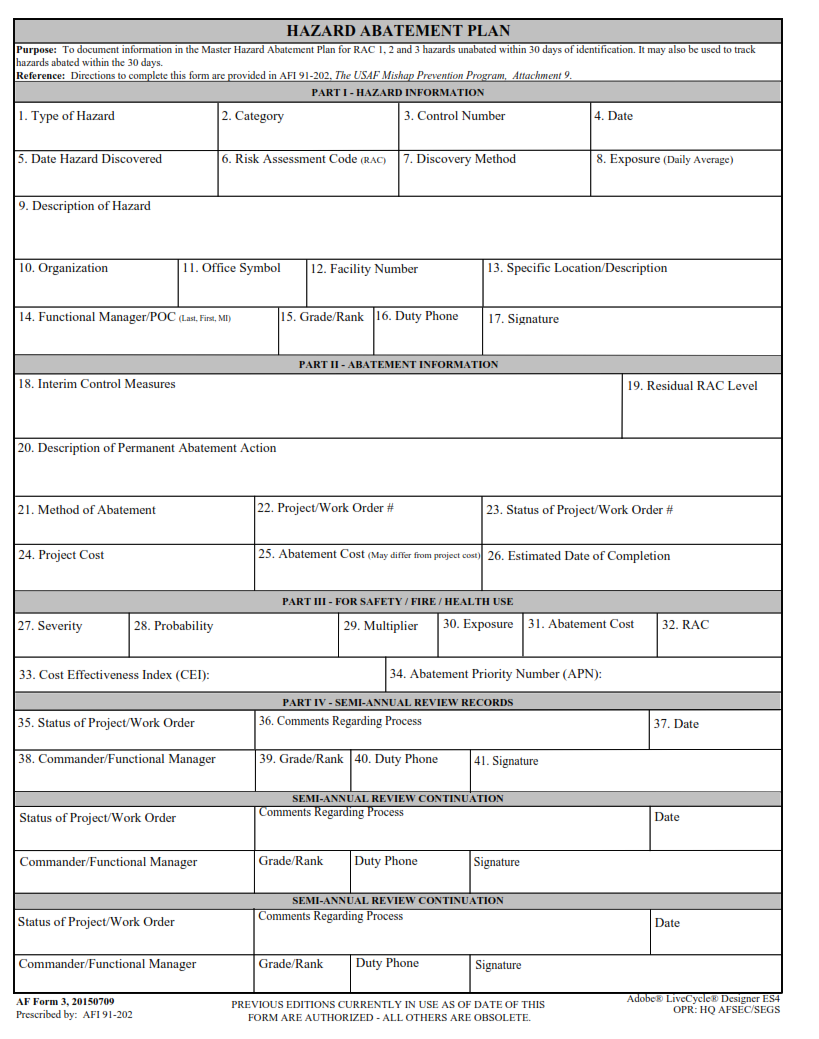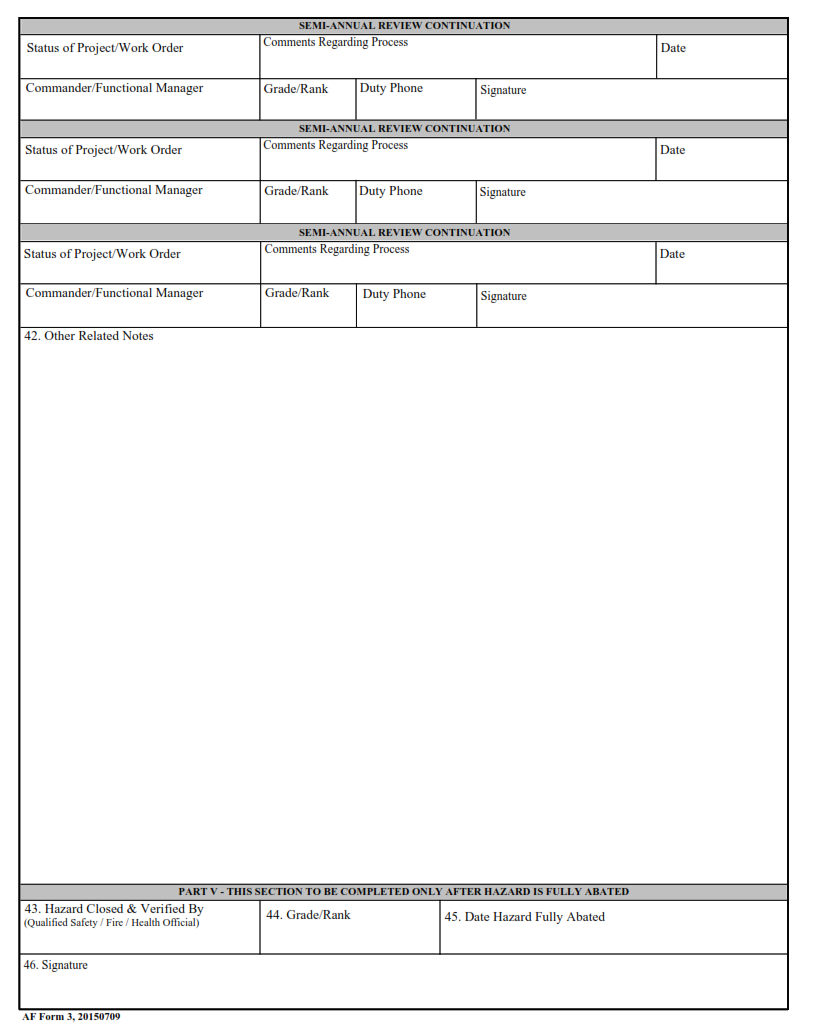FINDERDOC.COM – AF Form 3 – Hazard Abatement Plan – The AF Form 3, also known as the Hazard Abatement Plan, is an essential tool for any organization dealing with hazardous materials and situations. This form outlines a comprehensive plan that helps ensure proper safety protocols are followed to mitigate risk in potentially hazardous environments. It is designed to provide a step-by-step approach for identifying hazards, assessing the level of risk associated with each hazard, and developing appropriate control measures for abatement. By following this form, organizations can create a safe working environment for their personnel and minimize the chances of accidents or disasters occurring due to hazardous conditions.
Download AF Form 3 – Hazard Abatement Plan
| Form Number | AF Form 3 |
| Form Title | Hazard Abatement Plan |
| File Size | 2 MB |
| Date | 09-07-2015 |
What is an AF Form 3?
An AF Form 3, or Hazard Abatement Plan, is a document used by the United States Air Force (USAF) to identify and mitigate potential safety hazards in the workplace. The AF Form 3 helps organizations anticipate risks and take appropriate steps to prevent harm from occurring. It is an important tool for ensuring that USAF personnel are safe while performing their duties.
The AF Form 3 requires organizations to identify all potential hazards and create comprehensive plans for mitigating them. This includes developing procedures for addressing hazardous conditions such as poor lighting, inadequate fire protection measures, and inadequate ventilation systems. The plan must also detail how the organization will respond if any of these conditions occur and how they will be monitored on an ongoing basis. In addition, it must outline ways to reduce overall risk levels through employee training programs and other preventive strategies.
What is the Purpose of AF Form 3?
AF Form 3 is a document used by the United States Air Force (USAF) to identify and manage hazards in their workplace. The purpose of this form is to provide commanders, supervisors and safety personnel with a comprehensive plan for minimizing or eliminating safety and occupational hazards. This form outlines the required actions, resources and training necessary to achieve hazard abatement.
The AF Form 3 covers five key areas: identification of potential hazards, assessment of risks associated with these hazards, development of an action plan for hazard abatement, implementation of the action plan, and periodic review/update of the action plan as needed. By following this process, commanders can ensure that their work environment remains safe for all personnel. Additionally, it allows supervisors to quickly identify any changes in risk that may occur over time due to new tasks or operations.
Where Can I Find an AF Form 3?
The AF Form 3 is an essential document used to demonstrate that a Hazard Abatement Plan (HAP) has been developed and implemented. The AF Form 3 outlines the specific hazard abatement objectives, methods, and expected outcomes of the HAP. It is used by supervisors to provide guidance on how to minimize or eliminate potential risks associated with their particular workplace.
The AF Form 3 can be found on the Air Force website in the forms library section under “Operational Resources”. It is important that personnel have access to this form in order to properly develop and implement a HAP for their work environment. After completing the form, it must be submitted to the appropriate supervisor for review and approval before implementation begins.
AF Form 3 – Hazard Abatement Plan
Hazard abatement is an important process for any workplace, as it helps to ensure the safety of all personnel and the general public. The AF Form 3 is a tool used by the Air Force to help streamline this process and identify key hazard abatement tasks. This article will cover how to use the AF Form 3 effectively and efficiently, including what information needs to be filled out on each section of the form and how best to organize the tasks identified on it. Additionally, it will provide some insight into best practices for implementing an effective hazard abatement plan.
AF Form 3 Example

